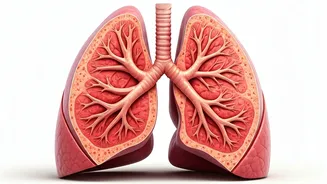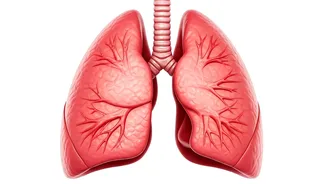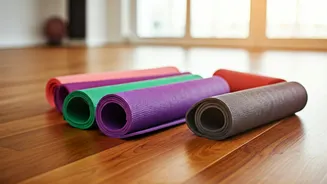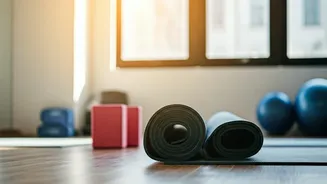Diaphragmatic Breathing
Diaphragmatic breathing, often known as belly breathing, is a fundamental technique. This method involves using your diaphragm, the large muscle situated
at the base of your lungs, to draw air in deeply. To practice it, sit or lie down in a comfortable position. Place one hand on your chest and the other on your abdomen. Inhale slowly through your nose, ensuring your abdomen rises while your chest remains relatively still. Exhale slowly through your mouth, allowing your abdomen to fall. This exercise is designed to increase the amount of oxygen you intake. Diaphragmatic breathing has been shown to reduce stress and improve lung function, making it a beneficial practice for daily use, especially during cold weather when respiratory issues are more prevalent.
Pursed-Lip Breathing
Pursed-lip breathing can be especially helpful for those experiencing breathlessness or who suffer from conditions that cause breathing difficulties. The technique involves breathing in slowly through your nose and then exhaling slowly through pursed lips, as if you're about to whistle. Imagine blowing out a candle. This method helps to keep your airways open longer, facilitating the release of trapped air within the lungs. Pursed-lip breathing also slows down your breathing rate and reduces the effort required to breathe, making it a valuable tool for managing shortness of breath. Regular practice can lead to improved oxygen exchange and reduced strain on your respiratory system.
Deep Breathing Exercises
Deep breathing exercises encompass a range of methods aimed at increasing lung capacity and improving oxygen flow. A straightforward exercise involves sitting or standing straight, inhaling deeply through your nose, holding your breath for a few seconds, and then exhaling slowly through your mouth. Another technique is alternate nostril breathing, which involves closing one nostril and inhaling through the other, then switching and exhaling. These types of exercises are designed to help improve the efficiency of your lungs. Such practices can enhance lung function and boost overall well-being. Consider incorporating these techniques into your daily routine to support better respiratory health, particularly during the colder months.
Cardiovascular Activities
Cardiovascular exercises are vital for lung health, as they elevate your heart rate and require your lungs to work harder to supply oxygen to your muscles. Activities like brisk walking, jogging, swimming, and cycling enhance lung function and efficiency. These exercises strengthen the muscles involved in breathing and increase your overall endurance. Furthermore, they improve cardiovascular health, which is closely connected to respiratory function. Consistent engagement in cardiovascular exercise helps improve blood circulation, which facilitates better oxygen delivery throughout your body. For optimal results, aim for at least 30 minutes of moderate-intensity cardiovascular exercise most days of the week, especially during the winter, to keep your lungs healthy and active.
Incorporate Yoga Poses
Yoga, with its combination of breathing exercises and physical postures, can greatly benefit respiratory health. Certain yoga poses, such as the cobra pose (Bhujangasana) and the triangle pose (Trikonasana), help expand the chest and improve lung capacity. These postures can support deeper breathing, allowing more oxygen to enter your lungs. Along with the physical postures, yoga emphasizes techniques such as pranayama, which involves controlled breathing exercises. Regular practice improves oxygen flow and helps reduce stress, contributing to overall respiratory wellness. Consider incorporating yoga into your routine, particularly during winter, to bolster lung function and enhance overall respiratory health.






